
Wild Thoughts - Part II
Wild Thoughts is a three-part blog series on wilderness ethics and management written in anticipation of the 2020 Adirondack Wilderness Symposium. Organized in part by Adirondack Council, the Symposium (dates TBD) will be open to the public and will feature programming on such varied topics as the legal status of wilderness in New York State, wilderness management in the era of climate change, and the more intangible, philosophical character of wilderness. Similarly, each segment of this summer-long blog series will tackle a different, broad wilderness-related question. Together, the Symposium and this series will attempt to offer a comprehensive, 21st-century consideration of wilderness as a legal concept, an ecological condition, and a cultural phenomenon.
Part II: For Whom Does Wilderness Exist?
In the first installment of this series, I discussed the idea that wilderness is a place where people don’t live. By the federal legal definition, wilderness is land in which “man himself is a visitor who does not remain.” So, I’ve been wondering: who gets to access wilderness?
Who lives near wilderness?
Most Americans live far away from wilderness, in cities. According to a 2015 report by the U.S. Census Bureau, 62.7% of Americans live in cities, which occupy just 3.5% of the country’s land area. Though the percentage of Americans living in cities has continued to increase, visitation rates to wilderness areas have been growing as well. In 2016, the National Forest Preserve (NFP) recorded nearly nine million visits to NFP wilderness areas, up from 7.7 million in 2007. But despite this upward trend, a great number of Americans will never visit a wilderness area in their lifetime. Does wilderness exist for people who will never see it?
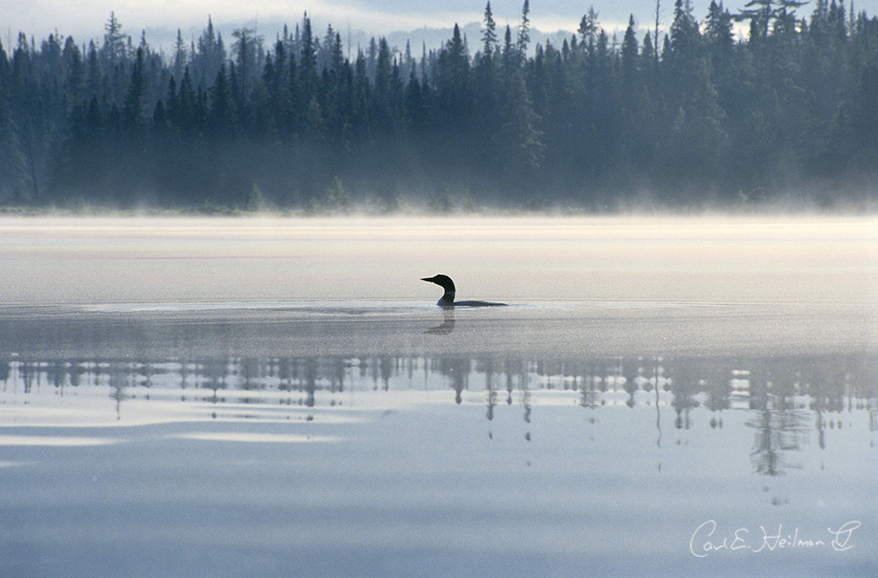
Who benefits from wilderness?
There’s another way of putting this: who benefits from wilderness? Unlike many other questions about wilderness, this one has a short and easy answer: everyone! Every single person on the planet benefits from the existence of wilderness, whether they know it or not. Wilderness areas provide key ecosystem services, or benefits to humans that result from a functioning natural environment. Ecosystem services can benefit humans directly (e.g. oxygen production) as well as indirectly (e.g. habitat for pollinators, which occupy an essential role in the U.S. food system and economy). These benefits can be ecological in nature, such as clean water production, or more intangible, such as the aesthetic or spiritual value of wilderness. These intangible or “non-use” values are values individuals place on wilderness that do not involve physically visiting or “using” it. For example, a person might not want to visit wilderness, but could value the plain fact that it exists. A person might also appreciate the “bequest value” of wilderness, or the value of knowing that wilderness will exists for future generations to enjoy.
While people value wilderness areas differently, we all enjoy the ecological benefits they provide. For example, forests help safeguard against catastrophic global warming by capturing 15% of annual carbon emissions worldwide. As deforestation and global emissions continue to increase, legally protected forest areas represent hope in the fight against climate change. Wilderness is not a place where people live. However, wilderness helps keep everywhere else on the planet livable. This is why threats to wilderness anywhere represent threats to people everywhere.
To whom does wilderness belong?
Because everyone (i.e. the public) benefits from wilderness, wildlands can be said to be part of something called “the public trust.” A public trust occurs when a government permanently preserves lands and/or waters for the public’s use and benefit. The concept dates back to the Roman Empire and is usually invoked to protect waterways such as lakes and rivers from environmental harm. It’s possible to think about the Adirondack Park as a public trust: the public entrusts the state of New York (the trustee) with the responsibility of protecting the Forest Preserve for the people of New York State (the beneficiary). These protections are established by the Forever Wild clause, Article XIV of New York State’s Constitution. As an interesting aside, the public trust doctrine is currently being invoked in an ongoing U.S. Supreme Court case, Juliana v. USA. The 21 plaintiffs, who are all between ages 12 and 23, argue that the US government, in its failure to address climate change, is currently violating the public trust doctrine and the plaintiffs’ constitutional rights.
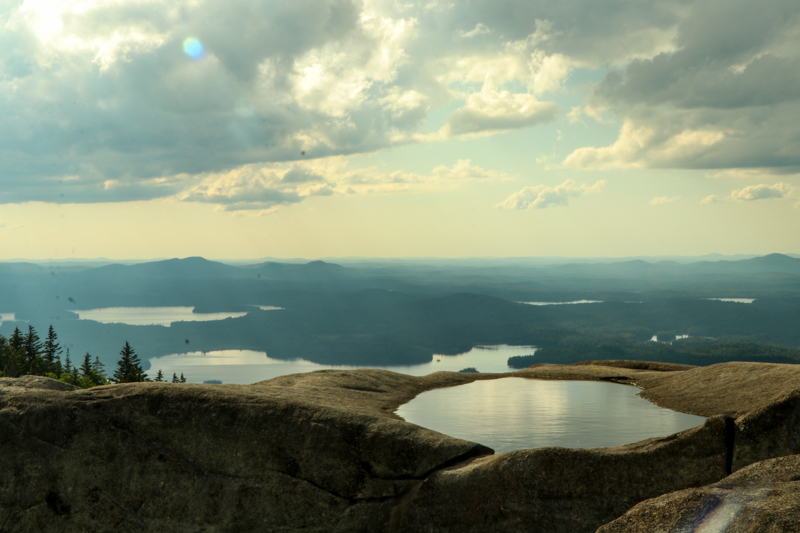
So, let’s review: wilderness areas benefit everyone and, in a legal sense, belong to everyone. However, not everyone shares the same access to and feelings of belonging in the wilderness.
Who has access to the wilderness?
There are some significant barriers to visiting the wilderness. As mentioned previously, most people live far from it (except for those who live within the Adirondack Park, where vibrant towns and hamlets border wilderness areas). There are also steep financial barriers to accessing wilderness -- a visit to wilderness typically requires a car, adequate backcountry equipment, and the luxury of time. Access to a car is rarest in New York State, which has the lowest rate of vehicles per capita in the country at 0.55 vehicles per person in 2010.
It’s worth noting that in the Adirondack Park, there is a long-standing “affiliation between wealth and wilderness.” Dating back to the late 19th century, the Adirondacks functioned as a playground for some of the wealthiest and most influential families in the US. During this “Gilded Age,” families like the Durants and the Vanderbilts built and owned Great Camps, or massive lakeside compounds built in a traditional Adirondack style. Second homes are still ever-popular in the Adirondacks: the only two counties fully within the Adirondack Park, Hamilton County and Essex County, have higher percentages of second homes than anywhere else in the state -- 82.6% and 32.98%, respectively.
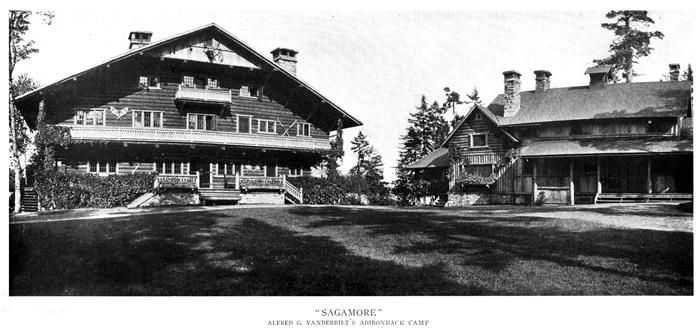 Who feels welcome in the wilderness?
Who feels welcome in the wilderness?
Anyone who spends even a bit of time in the Adirondacks will likely hear about Teddy Roosevelt’s passion for the Park and his famous midnight ride from Newcomb to North Creek. President Roosevelt left a complicated legacy — arguably, no American president has done more to conserve nature. At the same time, he supported appalling imperialist policies in the Caribbean and the Pacific, asserting that it was the “manly duty” of the United States to annex Caribbean and Pacific Island nations and control their affairs.
Roosevelt also left behind an image and aesthetic of the “consummate outdoorsman,” someone who knows much about the wilderness and feels a sense of belonging there. This image — of a white, male, affluent, able-bodied person — continues to shape contemporary opinions about who belongs in the wilderness. A study published in the International Journal of Wilderness in 2000 found that wilderness users are “almost exclusively” white, and that members of the "semi-autonomous class'' (educated white males) primarily define what wilderness is and make up the majority of wilderness users and advocates.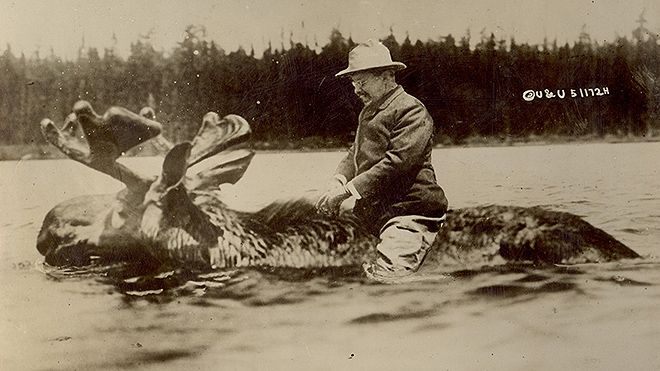 This doctored image of Teddy Roosevelt riding a moose was created by photography firm Underwood and Underwood in 1912. In an early attempt at “photoshopping,” the firm combined pictures of a moose and Roosevelt riding a horse to create this image..However, many wilderness and outdoor-enthusiasts do not fit the narrow, Rooseveltian conception of an “outdoorsman.” Today, there are many amazing efforts to reclaim wilderness as a space for individuals and groups who have been traditionally excluded from wild places on the basis of their identity. I’ve linked some of these organizations and movements below:
This doctored image of Teddy Roosevelt riding a moose was created by photography firm Underwood and Underwood in 1912. In an early attempt at “photoshopping,” the firm combined pictures of a moose and Roosevelt riding a horse to create this image..However, many wilderness and outdoor-enthusiasts do not fit the narrow, Rooseveltian conception of an “outdoorsman.” Today, there are many amazing efforts to reclaim wilderness as a space for individuals and groups who have been traditionally excluded from wild places on the basis of their identity. I’ve linked some of these organizations and movements below:
- Outdoor Afro - Outdoor Afro is a national non-profit that connects African Americans and nature through meetups, media campaigns and advocacy efforts. The organization promotes equity and inclusion in outdoor spaces and in the conservation movement as a whole.
- Outdoors for All Foundation - The Outdoors for All Foundation provides a variety of outdoor recreational opportunities and education to nearly 3,000 individuals with disabilities each year.
- National Outdoor Leadership School (NOLS) - NOLS offers a variety of short-term, semester and year-long courses in outdoor skills, wilderness medicine and Leave-No-Trace (LNT). They are committed to diversity, equity and inclusion in the outdoors and offer a variety of scholarships and fellowship programs specifically designed for youth of color.
- Native Women’s Wilderness - The mission of Native Women’s Wilderness is to “inspire and raise the voices of Native Women in the Outdoor Realm. To encourage a healthy lifestyle grounded in the Wilderness. To educate Natives and non-Natives on the rich beauty and heritage of the Ancestral Lands beneath our feet.” The organization is run by indigenous women and seeks to promote representation of women of color in outdoor advertising campaigns, build community and educate about native lands and peoples.
- @pattiegonia on Instagram - Pattie Gonia is everyone’s favorite backcountry drag queen. She uses her platform (and her platform heels) to advocate for queer representation and comfort in the outdoors, Leave No Trace (LNT) practices, and reduction of single-use plastics.
- Fat Girls Hiking - Fat Girls Hiking is a body-positive, inclusive outdoor community and movement with a fantastic motto: “trails not scales.”
- Adirondack Diversity Initiative - In our own backyard, the Adirondack Diversity Initiative (ADI) works to make the Adirondack Park welcoming and accessible to tourists and residents of color. ADI received a $250,000 grant for its work during this year’s state legislative session.
- Recent environmental policy in New York State - the 2019 DEC Primitive Tent Guidance document and the new Statewide Comprehensive Outdoor Recreation Plan (SCORP) both lay out concrete measures to increase accessibility on public lands while preserving their wild character.
- Action plans on inclusivity and the outdoors published by major news outlets, such as The Atlantic and Outside Magazine.
For Whom Does Wilderness Exist?
Time to point out the elephant in the room… or, um, the human. Many would argue that this post is hopelessly anthropocentric, and that wilderness doesn’t exist for people at all! Some believe that wilderness exists for non-human animal and plant communities alone. Others stand by the “inherent value” argument, that wilderness exists for itself and has value simply because it is. In the following (and final) installment of this series, I will ask: why wilderness?
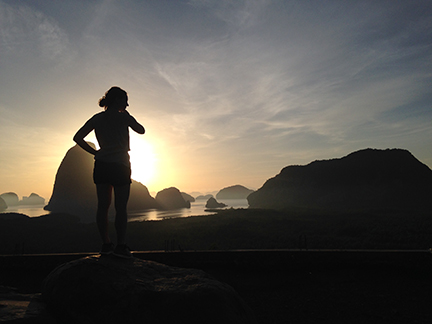 Julia Randall is from Albany, NY and graduated from Williams College this year with a degree in English. As a Clarence Petty Conservation Intern, she works on a variety of projects related to overuse and wilderness management, including a white paper that envisions an EV shuttle system in the Adirondack Park. An aspiring environmental lawyer, Julia is passionate about climate justice and getting the words right. In her free time, she enjoys hiking, making music, and frequenting Donnelley’s Ice Cream.
Julia Randall is from Albany, NY and graduated from Williams College this year with a degree in English. As a Clarence Petty Conservation Intern, she works on a variety of projects related to overuse and wilderness management, including a white paper that envisions an EV shuttle system in the Adirondack Park. An aspiring environmental lawyer, Julia is passionate about climate justice and getting the words right. In her free time, she enjoys hiking, making music, and frequenting Donnelley’s Ice Cream.




